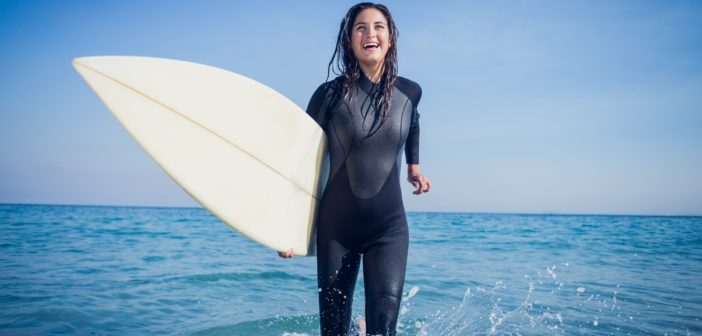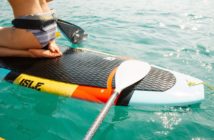Are you a water-loving outdoor enthusiast? If you are, you’ve likely considered purchasing a wetsuit or drysuit to better outfit you for your adventures.
But which type of suit should you get?
When looking at a wetsuit vs drysuit there are many similarities, such as the main purpose of keeping you warm during water-related activities. But they also have many differences.
Wetsuits and drysuits are not the same, and there are different suit designs within each type. Choosing the right one for your adventure is important for keeping you safe and warm.
Whether you’re looking for the best drysuit for kayaking or wetsuit for surfing, there’s a lot you’ll need to consider. Keep reading to learn the differences between wetsuits and drysuits and why you may choose one over the other.
Wetsuits: What Are They?
Wetsuits provide your body with warmth while you’re participating in water activities, but they do not keep you dry. Instead, they allow a small amount of water to enter the suit.
This water then rests between the suit and your body and warmed up by your body heat. The warm water can then work as an insulator while you enjoy your activity.
Several types of wetsuits exist, offering various levels of protection and warmth. Each type is better suited for certain activities while you’d be better off choosing something else for other water fun.
Some common types include long john, short john, full body, and hooded.
Long John wetsuits cover your torso and legs down to your ankles but lack sleeves, leaving your arms exposed. Short john wetsuits are similar, but only cover the thighs instead of the entire leg.
Full body wetsuits cover your torso, legs down to your ankles, and arms to your wrists. A hooded wetsuit covers these same areas with the addition of a hood to keep in even more body heat.
Wetsuit jackets and vests are also available.
Whatever type of wetsuit you choose, making sure it fits correctly is important. Otherwise, you’ll still be cold. Your wetsuit should fit snuggly, so much so that it’s awkward to get it on. If your suit is too loose it will allow too much water to enter the suit.
While you want a snug fit, make sure it isn’t so tight that it restricts movement.
When to Wear a Wetsuit
There are several times when it’s a great idea to wear a wetsuit, but your decision to wear one or not largely depends on your chosen activity and the temperature of the water involved.
A full or hooded wetsuit should be chosen for scuba diving in cold water, while a long or short john is fine when the air is warm.
If you’re needing some insulation during your water activity, a wetsuit is a great idea. Research the various types and choose one that matches your plans.
Drysuits: The Not-So-Wet Option
Drysuits are another great option for keeping warm during water activities, but unlike wetsuits, these ones keep you dry. For the most part. Drysuits fight hard to keep water out using water-proof fabric and a combination of seals and gaskets around openings.
Two types of drysuits exist; paddling suits and diving suits. Paddling suits are used for kayaking and similar activities and won’t actually keep you completely dry if you end up in the water.
Diving drysuits are heavier-duty, built for activities like scuba diving. Extra features such as inflator valves help protect you from the cold while keeping you dry.
Drysuits can be made from different kinds of materials. One option is neoprene, a synthetic rubber that is flexible and contains nitrogen bubbles. The other option is a suit made from membrane/trilaminate, which includes various layers, including one of neoprene or butyl.
When purchasing a drysuit, look for a looser fit than you’d want with a wetsuit. Normally you’ll be wearing clothing or thermals with your dry suit, so make sure to leave room for that. Try suits on wearing a layer and perform various exercise to make sure you have the range of motion you will need.
When to Wear a Drysuit
Drysuits are generally used in situations where the weather and/or water are extremely cold. Wearing a drysuit in these conditions is very important, as your suit can help prevent hypothermia.
Don’t enter very cold water without one!
Due to their makeup and purpose, drysuits are not a great option if you plan on participating in water activities in warm weather or water. For those situations, choose a wetsuit.
Caring for Your Suit
Whichever type of suit you choose to wear for your water adventures, it’s important to make sure the suit receives proper care.
Suits can wear out, but they should last you a while. A good quality wetsuit, for example, could last you four to ten years if it is properly taken care of. Make sure you know proper care instructions and you’ll keep your suit working for you longer.
A wetsuit is pretty pointless if it leaks, so make sure the fit and care are adhered to properly.
Wetsuit vs Drysuit: A Summary
When considering the wetsuit vs drysuit debate, you’ll likely find reasons to use both suit types. The most important thing to remember is one will sometimes match your activity better than the other.
If you’re planning an activity or trip, consider your needs and the protection you’ll want, then go with the type of suit that matches best.
While you may find that certain options are cheaper or more attractive than others, don’t let that throw you. Always choose the option that’s best for your chosen activity.
Questions or comments on this article? Head on over to our site to let us know!




